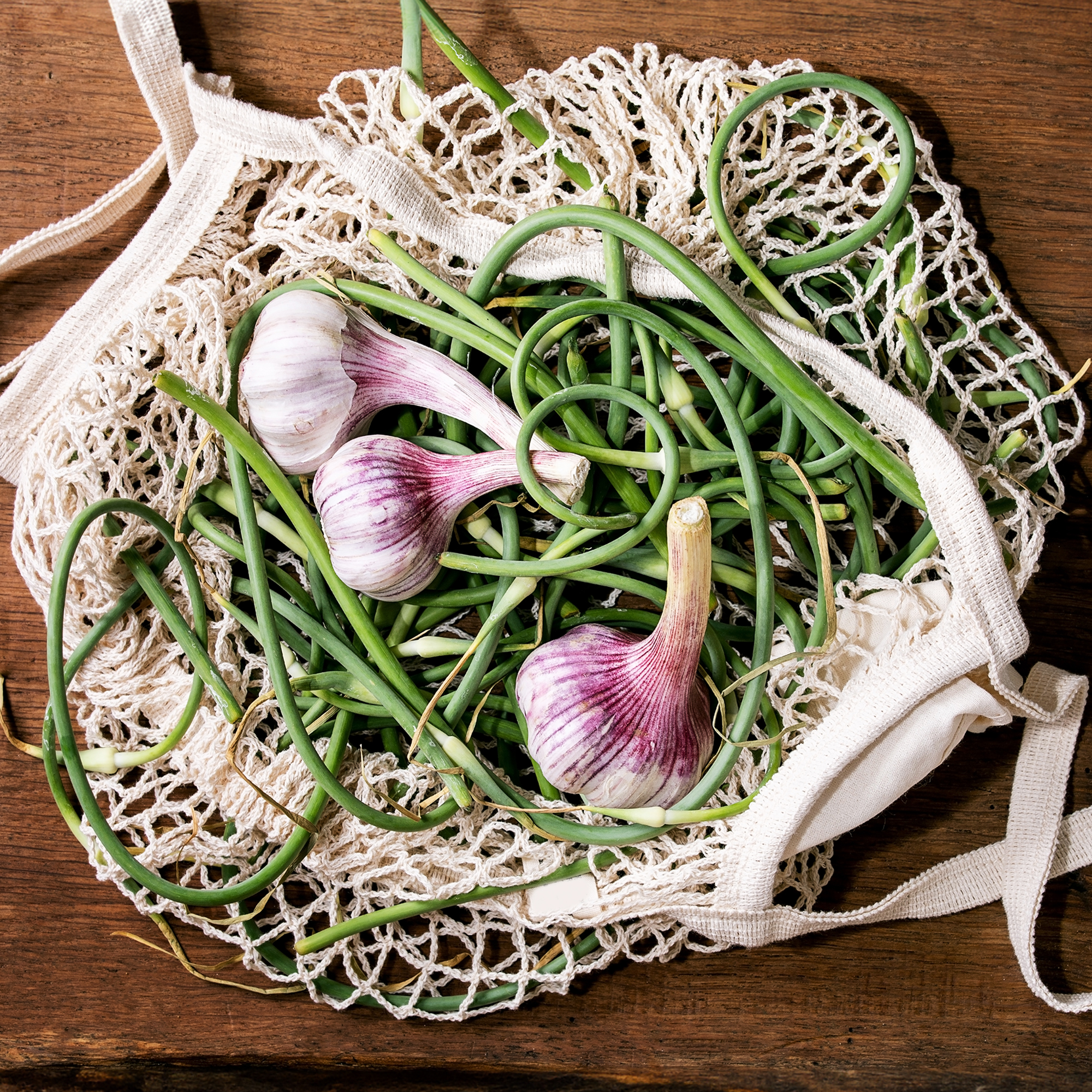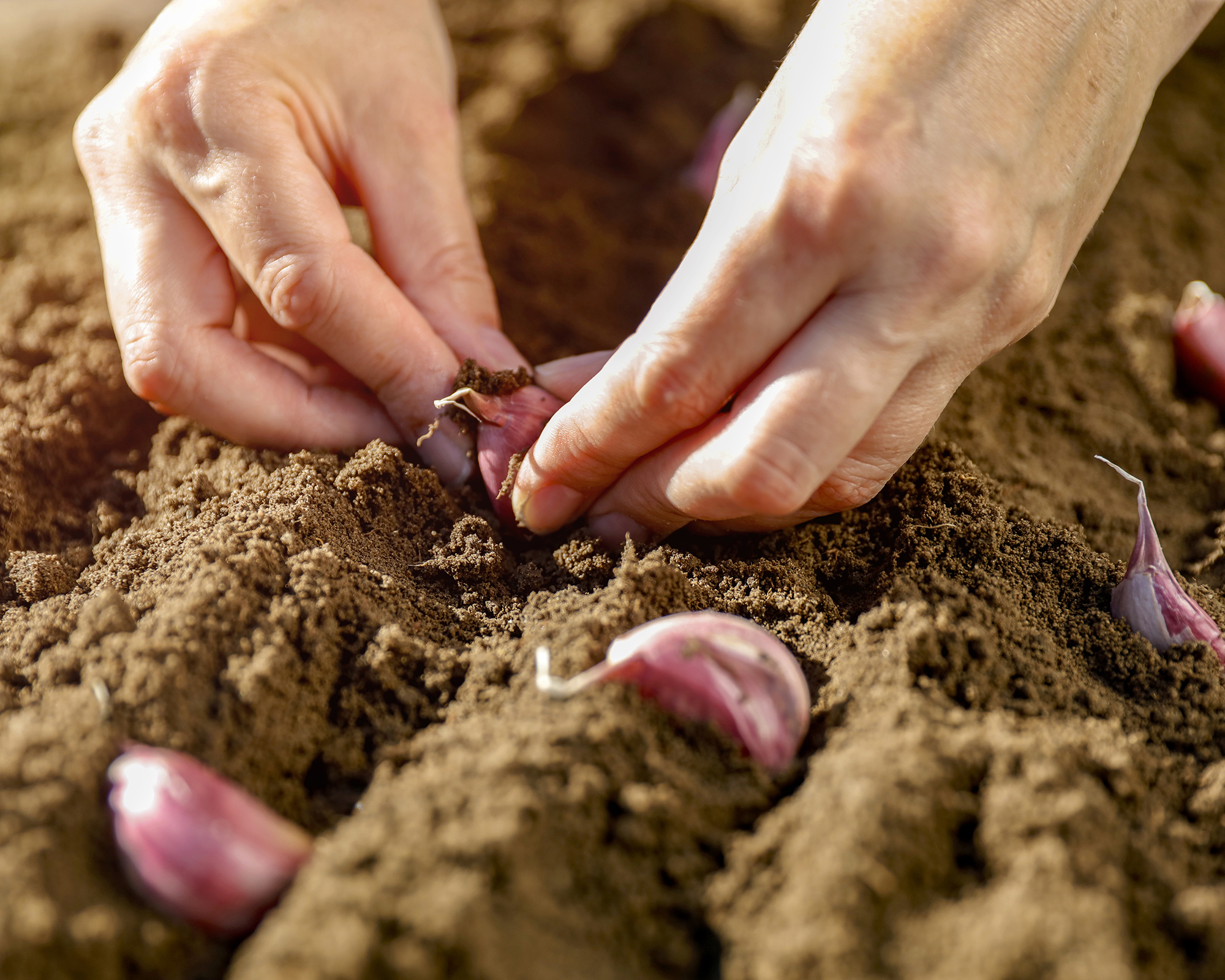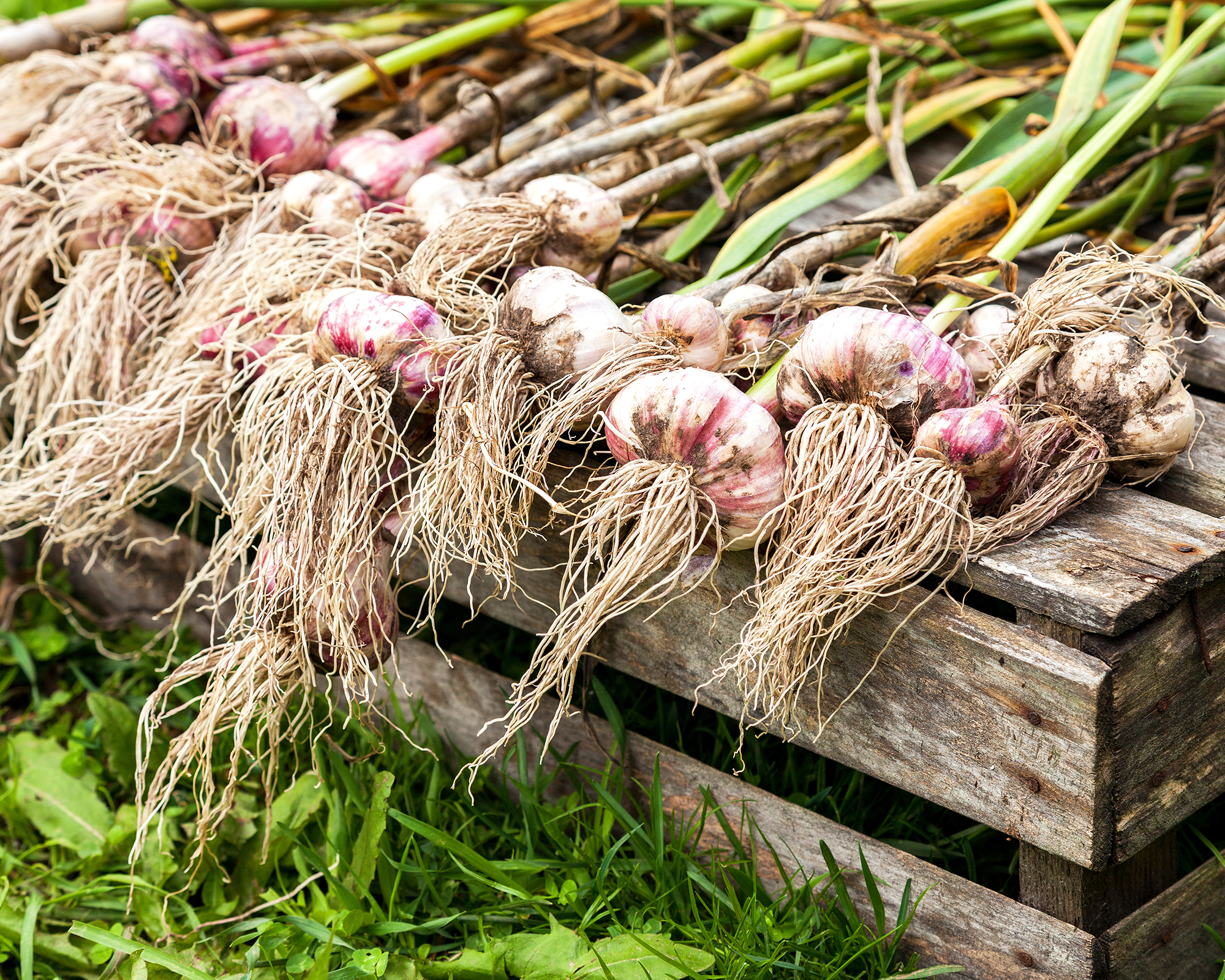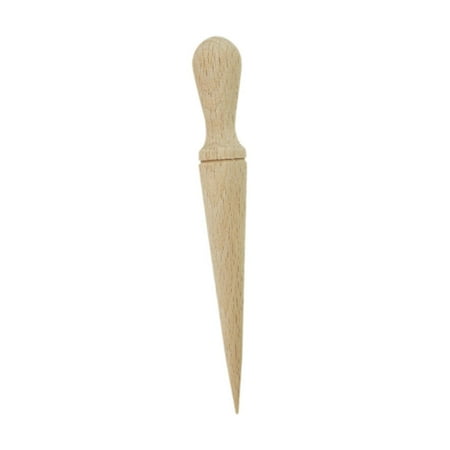I Can't Wait to Try Martha Stewart's Garlic-Growing Secret – Plus the 8 Unique Varieties She's Planting This Fall
Plant your garlic crop for next year now, using Martha's extra step for success, and you will have endless tasty dishes to enjoy.


If you're anything like me, you love cooking with garlic. It's such a versatile, flavor-packed ingredient, ideal for adding to dishes from hearty soups and pasta sauces to ragu and stews.
Though the weather is cooling day by day as fall bows out for the year, it's the perfect time to start growing garlic. The exact timing for planting garlic by zone varies, with gardeners in milder climates able to continue planting through winter. Still, almost everyone can get those cloves into the ground in the weeks surrounding Halloween.
If you need any more convincing, then take a cue from iconic gardener Martha Stewart, who just posted online all about planting hers in hopes of a bumper crop next summer.
A photo posted by on
Taking to Instagram, Martha shared a snap of a box filled with seed garlic eady to add to her vegetable beds.
"I grow my own garlic every year," says Martha. "In early fall I get my seed garlic from Keen Garlic in Madison, Wisconsin, [...] who specialize in heirloom products."
Over on her blog, Martha shared all the garlic varieties she is planting and went into detail about her planting process, along with a clever extra step she takes:
- Amish Rocambole: "A robust and very hardy type. It grows well in Northern States, and has large impressive bulbs with flavor that’s deep, full bodied, and medium hot." Available to buy at Rick's Garden Center.
- Romanian Red Porcelain: "Best for medicinal purposes because it is high in allicin. It is known to be very hot with a tanginess that tends to linger." Available to buy at Burpee.
- German Extra Hardy Porcelain: "Large-sized and medium flavored. Because of its large root system, this hardneck is extremely hardy and often withstands freezing and thawing cycles when other garlic varieties don’t." Try this similar Van Zyverden Garlic Hardneck Porcelain Northern Extra Hardy from Walmart.
- Music Porcelain: "Easy to grow. Raw, this garlic is very hot-flavored, but it mellows when it is baked or roasted." Available to buy from NYGardenworld Garlic via Amazon.
- Asian Tempest: "Asiatic is very hot when eaten raw and sweet when baked. It tastes rich, garlicky, strong, and robust with easy to peel jumbo cloves."
- Chesnok Red – Purple Stripe: "An heirloom variety. It is loved for its rich flavor as an all-purpose cooking garlic. It’s also well known as a superb baking garlic. Available to buy at Walmart.
- Northern White: "Very strong, hot, and potent. It also has easy to peel jumbo cloves. It’s a great all-purpose garlic for mincing, baking, and grilling." Available to buy at Burpee.
- Elephant Garlic: "Actually a leek that resembles garlic in growing and in appearance. It has a very mild flavor. It is most commonly found in grocery stores. It is also larger than the other garlic varieties." Available to buy from the Daylily Nursery Store via Amazon.
Martha's Garlic Planting Secret
Martha's planting process begins with carefully refreshed soil – she adds a layer of rich organic mix, rakes it smooth, and feeds it with a garlic-specific organic fertilizer before planting even begins. Straight, evenly spaced rows are a must in her raised beds, ensuring each clove has room to develop into a full, healthy bulb.
Sign up for the Gardening Know How newsletter today and receive a free copy of our e-book "How to Grow Delicious Tomatoes".
However, I was most intrigued by an extra step she takes to "help produce larger, healthier bulbs and improve nutrient absorption." Before planting, Martha’s team soaks each batch of cloves in a bioactive solution – specifically Purple Cow Organics Liquid Biology Bundle, available from Amazon. This special mix is approved for organic growing and contains many nutrients as well as beneficial fungi. "Soak the garlic for at least 30 minutes or up to overnight," says Martha.
Once drained and dried, the largest cloves are planted about three inches deep, pointed end up, and spaced several inches apart. It’s a meticulous approach, but one that results in large, flavorful bulbs by midsummer – proof that a little extra preparation pays off in the harvest.

If you'd like to hop on board and plant garlic too, it's really simple to do and there's still time. I spoke to three avid gardeners to explain all you need to know to successfully plant garlic in fall. Imagine all the delicious food you'll be tucking into next winter.
Why is Fall the Best Time to Plant Garlic?
The fall-winter transition is terrible for the health of a lot of plants, and will ruin any chance of young seeds being able to germinate. But this isn't the case for the various types of garlic. In fact, the cooling temperatures actually help them grow larger and more flavorful.
As Tom Papia, an avid gardener and the founder of Invent Your Recipe, explains: "Fall is the perfect time to plant garlic because it needs cold weather to develop properly. Garlic cloves require a period of chilling, called vernalization, to trigger bulb formation.
"When planted too late in the spring, the cloves will usually grow tall green shoots but won’t form full bulbs. So fall planting gives the cloves time to establish roots before winter and sets them up for strong growth once spring arrives."

How Do I Plant Garlic?
Garlic cloves are rather easy to plant, but to grow the most garlic in garden bed it's best to plant them in evenly spaced out rows. Doing this will also help you to keep track of how many of your garlic didn't sprout, so you can better identify if something went wrong in its growth process.
Angelika Zaber, an expert in gardening and lawn care at Online Turf, recommends following this simple step-by-step if you're planting garlic up this fall. "To plant garlic, start by clearing the soil of all weeds and then dig in some compost or well-rotted manure into the soil and rake everything over well.
"Once this is done, push the cloves in, ensuring that they have at least 3 cm of soil covering the tips. Garlic is usually grown in rows so make sure that each clove is planted 15 cm apart, leaving 30 cm of space between the rows."
A tool like the Berrry&Bird Seeding Widger from Amazon can be incredibly helpful to have on hand when planting something that benefits from being equally spaced. With this tool, you can ensure your garlic bulbs are planted deep enough in the soil as well as far enough apart.

Caring for Garlic Through Winter
Garlic doesn't require a lot of care – including watering – in the winter, since it has higher cold tolerance than other vegetables and doesn't need any added moisture during the cold. Though homesteader Lindsey Chastain of The Waddle and Cluck says you can add a protective layer of nutrient-rich mulch over the top to fertilize your garlic and keep out some of the winter chill.
"After planting, water in the cloves and cover the garlic with around 5" of mulch," says Lindsey. "Dried leaves and pine needles work great, but whatever you us,e keep an eye on your mulch. If anything gets wet and clumps, mold and fungus can start to breed. Remove any wet clumps and turn it occasionally. You may need to replenish the mulch once or twice before spring."
Garlic Planting Essentials

If you prefer your garlic on the milder side, try planting Siberian garlic. It's naturally less pungent in flavor but still delicious.

This complete garlic fertilizer encourages strong bulb development and healthy growth for the most flavorful crop.

If digging creates strain on your hand, a tool like this handheld bulb planter will be perfect for making even holes to plant your garlic in.

Ciéra is a writer and regional laureate with particular passions for art, nature, philosophy and poetry. As well as contributing to Gardening Know How, she's an Editorial Assistant for Design Anthology UK and has words in other titles including Homes & Gardens, Livingetc, and Apartment Therapy. When she's not writing, Ciéra can be found getting incredibly excited when her small but ever-expanding garden shows more signs of growth. She believes it's something very beautiful to be cooking with her own produce, whether it's from her yard or picking berries from the wild to turn into jams or baked goods.